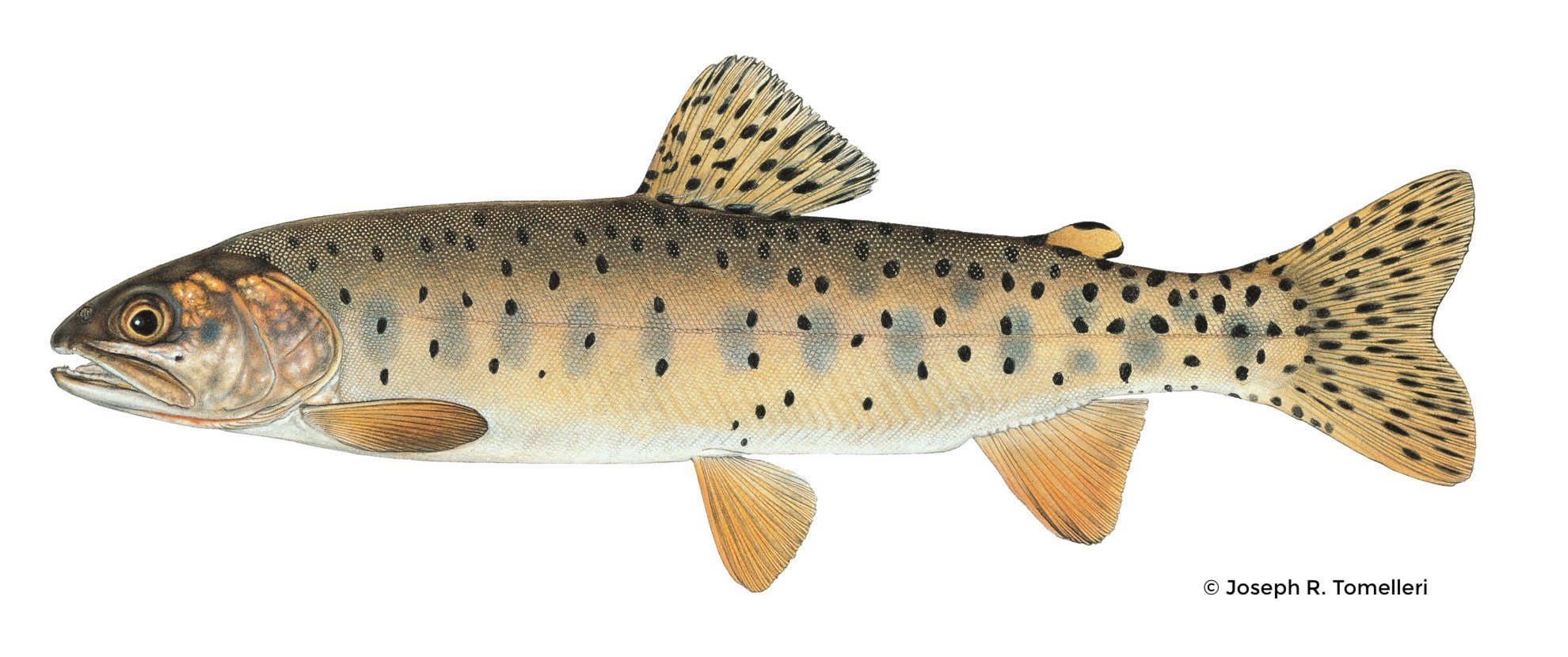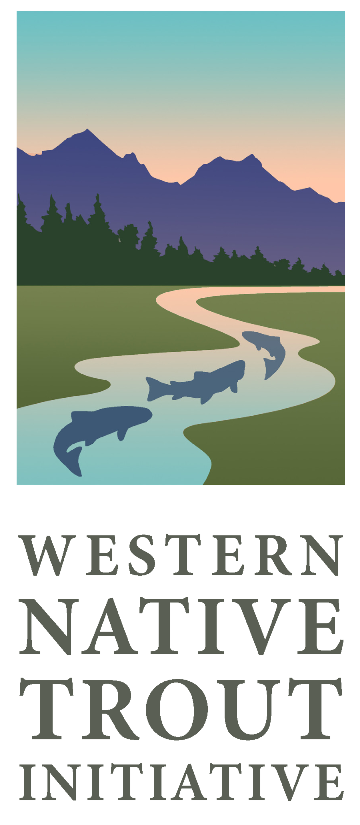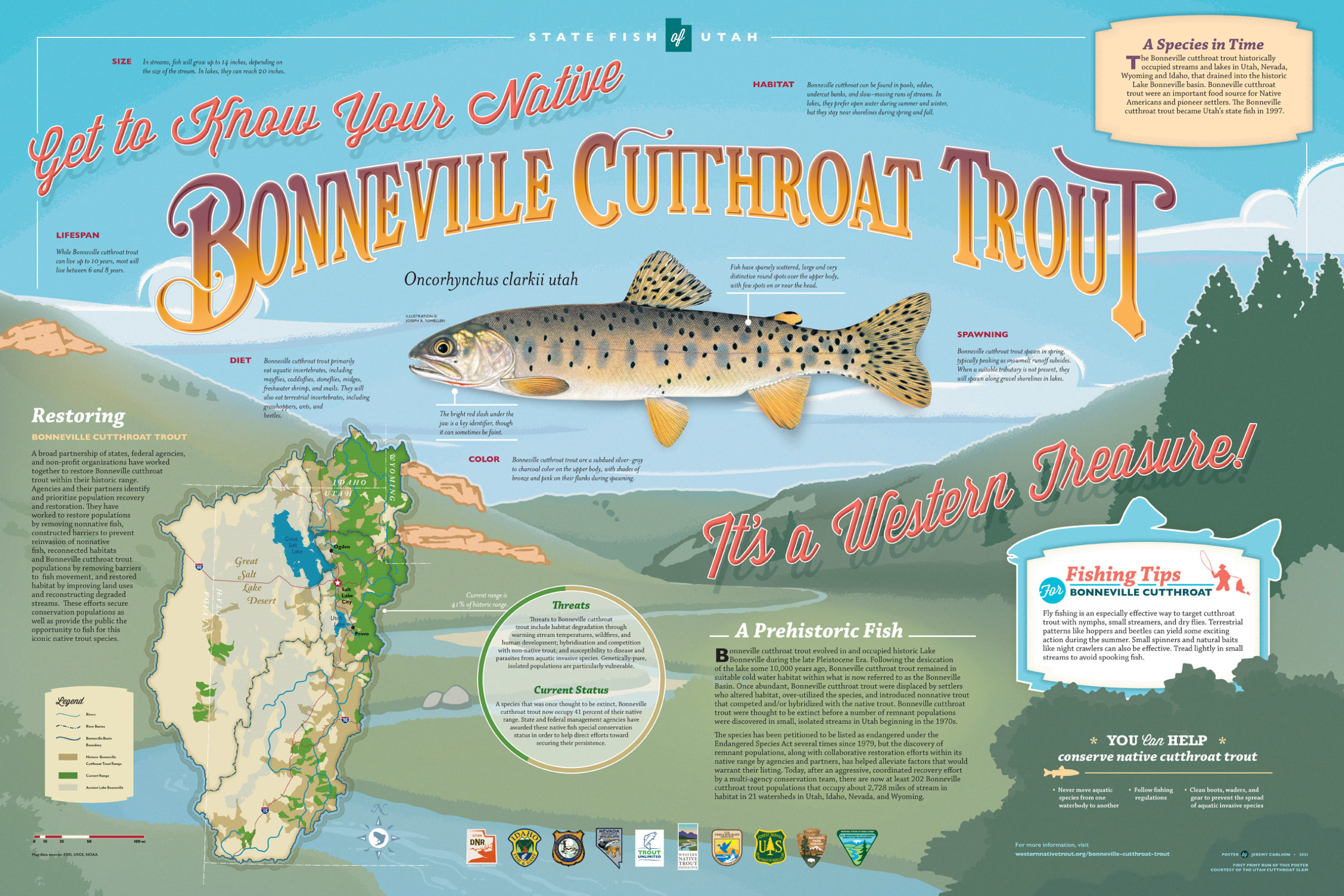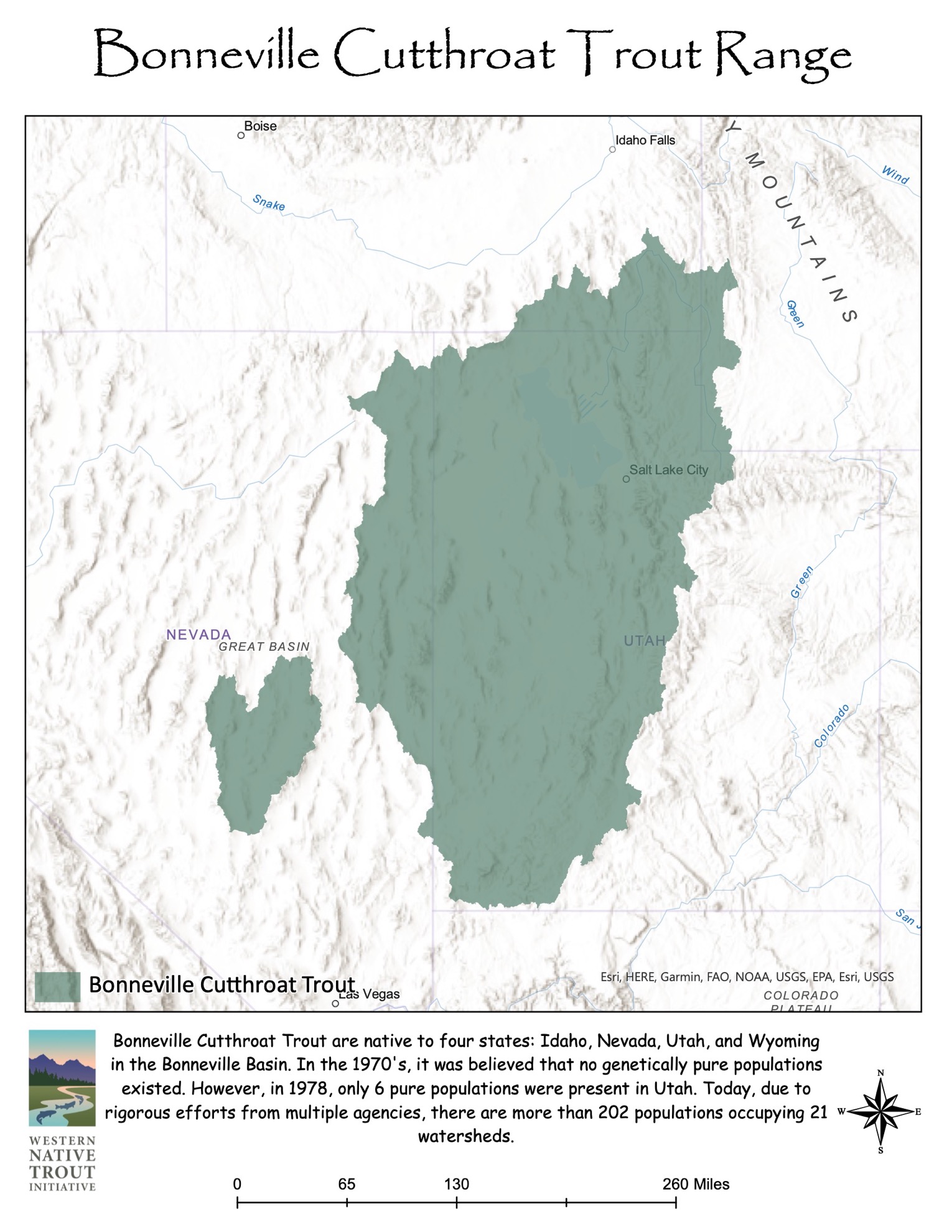
The State Fish of Utah, the Bonneville Cutthroat Trout was historically found in the Bonneville Basin, including suitable habitat within the basin portions of Utah, Idaho, Wyoming, and Nevada. Although scientists believed that pure strains of Bonneville Cutthroat were extinct 30 years ago, small populations have been found in nearly 70,000 acres of lakes and 850 miles of streams. The Bonneville Cutthroat’s coloration is less vivid than other cutthroat species, and it has large, evenly distributed spots.
The Bonneville Cutthroat Trout (Oncorhynchus clarki Utah) was historically found in the Bonneville Basin, including suitable habitat within Utah, Idaho, Wyoming, and Nevada. Although scientists believed that pure strains of Bonneville cutthroat were extinct, a few isolated populations were discovered in Utah in the 1970s and biologists began an in-depth search for the species, and cutthroat recovery became a priority across the West. In 1978, only six Bonneville Cutthroat Trout populations were known to exist in Utah. Field investigations by many agencies and groups increased known population numbers to 29 by the early 1990’s. Today, after an aggressive, coordinated recovery effort by a multi-agency conservation team, there are now at least 202 Bonneville cutthroat trout populations that occupy about 2,728 miles of stream in habitat in 21 watersheds in Utah, Idaho, Nevada, and Wyoming. These populations qualify as conservation populations under standards developed by the States. Of the 202 conservation populations, 55 percent are considered core populations. Conservation populations have at least 90 percent cutthroat trout genes and core populations have at least 99 percent cutthroat trout genes. Over the last 30 years, Bonneville Cutthroat Trout populations have been expanded in every management unit in Utah. Presently, Bonneville Cutthroat Trout brood populations exist in all the management areas of the state. With these brood populations, Bonneville Cutthroat Trout can be stocked into even more areas within their historic range to provide both sport fisheries and population expansion. The Utah Division of Wildlife Resources is the lead agency in developing and implementing the Range-Wide Conservation Agreement for Bonneville Cutthroat Trout signed in 2000. The conservation of this subspecies has involved biologists at all levels and regions of many agencies and organizations. Funding and conservation efforts continue and have been instrumental in preventing this subspecies from being listed.
Between 2007 and 2021, the Western Native Trout Initiative has contributed over $2,017,936 to 39 projects benefiting Bonneville Cutthroat Trout in Utah, Wyoming, Idaho, and Nevada. Project goals have been diverse –everything from genetic analysis, telemetry surveys, culvert renovation, road relocation, fish ladders, fish screens, streambank stabilization, and large watershed improvement projects.
Additional Resources
- READ the Bonneville Cutthroat Trout Rangewide Conservation Agreement and Strategy Plan (December 2019)
- READ MORE more about Utah Division of Wildlife Resources’ efforts to conserve Bonneville Cutthroat Trout
- READ Idaho Department of Fish and Game’s Management Plan for the Conservation of Bonneville Cutthroat Trout in Idaho (July 2022)
- READ MORE about Idaho Department of Fish and Game’s work to conserve Bonneville Cutthroat Trout
- READ MORE about Wyoming Game and Fish Department’s conservation of Bonneville Cutthroat Trout
Videos
WATCH WNTI’s Blueheads and Bonnevilles short film here to learn about our work in the Weber River in Utah, or go to the Collaborative Partnerships tab at the top of the website for more information about our Weber River projects.
WATCH THIS BLM-UTAH video about the reintroduction of 5,600 Bonneville Cutthroat Trout into Randolph Creek, Utah.
CLICK HERE to watch a Fox31 news video about microchipping Bonneville Cutthroat trout in the Weber River, Utah
CLICK HERE to watch a Utah Division of Wildlife Resources video about Bonneville Cutthroat Trout conservation in the Logan River.


